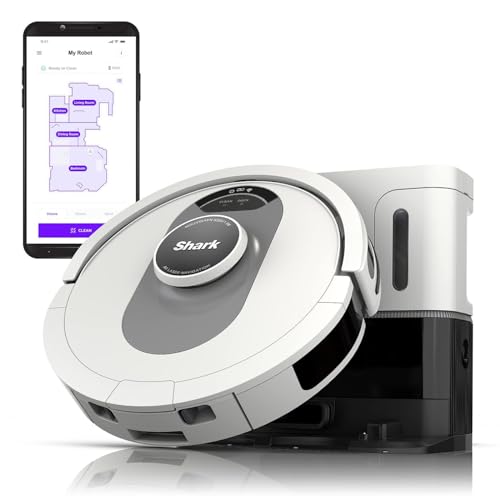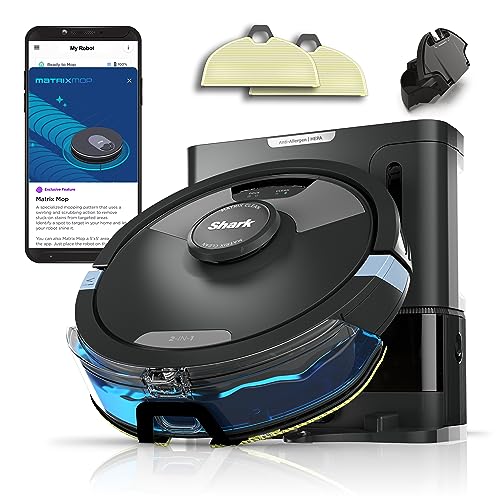10 Things Everybody Gets Wrong Concerning Bagless Automated Sweepers
페이지 정보

본문
Bagless Automated Sweepers
There's a new generation robot vacuum and mop bagless vacuums that don't use bags. Bagless models have plastic dirt compartments which hold debris and are then emptied directly into a bin at the base station. They usually have no or minimal recurring costs, except for changing filters, which can be cleaned.
Our top pick comes with 5,300Pa of suction power, and self-emptying into an unbagged base station that holds around a month's worth of debris. It also has an intelligent mopping mode.
 Easy to empty
Easy to empty
Contrary to vacuum cleaners with bags, bagless smart floor vacuum sweepers come with dirt receptacles that are simple to clean and empty. It's as simple as unlatching the debris bin and then throwing away the contents, and the lack of a bag to cut or lose makes it an easier process than switching out bags on a bagged model.
Many bagless self-emptying cleaner robots also feature self-emptying bases that reduce the requirement for hands-on maintenance. The base can last for months without needing to be empty. For models that mop, the water can last for several cleaning sessions. It is essential that the dock/Self Empty Base is placed in a spot that doesn't hinder the robot vacuum bagless's sensors, or obstruct it. It's also best bagless robot vacuum to use it only for dry mopping.
The receptacles for bagless robots are generally made of clear plastic which allows you to be able to see how much dirt and other debris the machine has collected as you empty it. This can be very satisfying, and it helps you keep on track of how full the receptacle is and if it needs to be emptied.
The clear plastic containers help you locate lost items, like Little Mary's or Jimmy's doll's barrette that might have been picked into vacuum cleaners. A lost toy is the most painful, so a bin that is visible will help locate it and spare you from having to search through a messy bag.
While the receptacles for bagless robotic sweepers are easier to empty than vacuums that have bags, they still require cleaning and cleaned every now and then. Fortunately, these are usually simple to complete and can be accomplished by any homeowner. Bagless vacuums can also have filters that need to be cleaned or replaced according to the model. But, they are a minor cost that is significantly lower than the cost of replacement bags for a bagged model.
Better clean
Bagged sweepers often stop working at their maximum performance when the bags are full, resulting in less than stellar cleaning performance. Bagless systems on the other hand, continue to perform well even when they are close to capacity. This ensures regular, high-quality clean over the entire sweep.
Most bagless models have a larger debris bin as compared to bagged models. This means that they can pick up a greater number of large objects, like metal screws and wood shavings as opposed to the smaller bins on some bagged models. This is particularly helpful when sweeping up stairs and in corners where dirt tends to accumulate.
Bagless models are more environmentally sustainable since they don't need disposable bags. Comparatively, bagged vacuums require hundreds of bags over their lifetime. This puts a strain on our environment.
Easy to maintain
 Bagless sweepers use a built-in canister to hold dirt and debris, so there's no need for vacuum bags. Bagless sweepers are also more environmentally friendly than their bagged counterparts. Bagged vacuum cleaners can use hundreds or even thousands of disposable bags in their lifetime. This adds up to an enormous amount of waste. Bagless models on the other hand only require a one-time investment in the machine itself. This helps reduce the long-term cost and the environmental impact.
Bagless sweepers use a built-in canister to hold dirt and debris, so there's no need for vacuum bags. Bagless sweepers are also more environmentally friendly than their bagged counterparts. Bagged vacuum cleaners can use hundreds or even thousands of disposable bags in their lifetime. This adds up to an enormous amount of waste. Bagless models on the other hand only require a one-time investment in the machine itself. This helps reduce the long-term cost and the environmental impact.
There's a new generation robot vacuum and mop bagless vacuums that don't use bags. Bagless models have plastic dirt compartments which hold debris and are then emptied directly into a bin at the base station. They usually have no or minimal recurring costs, except for changing filters, which can be cleaned.
Our top pick comes with 5,300Pa of suction power, and self-emptying into an unbagged base station that holds around a month's worth of debris. It also has an intelligent mopping mode.
 Easy to empty
Easy to emptyContrary to vacuum cleaners with bags, bagless smart floor vacuum sweepers come with dirt receptacles that are simple to clean and empty. It's as simple as unlatching the debris bin and then throwing away the contents, and the lack of a bag to cut or lose makes it an easier process than switching out bags on a bagged model.
Many bagless self-emptying cleaner robots also feature self-emptying bases that reduce the requirement for hands-on maintenance. The base can last for months without needing to be empty. For models that mop, the water can last for several cleaning sessions. It is essential that the dock/Self Empty Base is placed in a spot that doesn't hinder the robot vacuum bagless's sensors, or obstruct it. It's also best bagless robot vacuum to use it only for dry mopping.
The receptacles for bagless robots are generally made of clear plastic which allows you to be able to see how much dirt and other debris the machine has collected as you empty it. This can be very satisfying, and it helps you keep on track of how full the receptacle is and if it needs to be emptied.
The clear plastic containers help you locate lost items, like Little Mary's or Jimmy's doll's barrette that might have been picked into vacuum cleaners. A lost toy is the most painful, so a bin that is visible will help locate it and spare you from having to search through a messy bag.
While the receptacles for bagless robotic sweepers are easier to empty than vacuums that have bags, they still require cleaning and cleaned every now and then. Fortunately, these are usually simple to complete and can be accomplished by any homeowner. Bagless vacuums can also have filters that need to be cleaned or replaced according to the model. But, they are a minor cost that is significantly lower than the cost of replacement bags for a bagged model.
Better clean
Bagged sweepers often stop working at their maximum performance when the bags are full, resulting in less than stellar cleaning performance. Bagless systems on the other hand, continue to perform well even when they are close to capacity. This ensures regular, high-quality clean over the entire sweep.
Most bagless models have a larger debris bin as compared to bagged models. This means that they can pick up a greater number of large objects, like metal screws and wood shavings as opposed to the smaller bins on some bagged models. This is particularly helpful when sweeping up stairs and in corners where dirt tends to accumulate.
Bagless models are more environmentally sustainable since they don't need disposable bags. Comparatively, bagged vacuums require hundreds of bags over their lifetime. This puts a strain on our environment.
Easy to maintain
 Bagless sweepers use a built-in canister to hold dirt and debris, so there's no need for vacuum bags. Bagless sweepers are also more environmentally friendly than their bagged counterparts. Bagged vacuum cleaners can use hundreds or even thousands of disposable bags in their lifetime. This adds up to an enormous amount of waste. Bagless models on the other hand only require a one-time investment in the machine itself. This helps reduce the long-term cost and the environmental impact.
Bagless sweepers use a built-in canister to hold dirt and debris, so there's no need for vacuum bags. Bagless sweepers are also more environmentally friendly than their bagged counterparts. Bagged vacuum cleaners can use hundreds or even thousands of disposable bags in their lifetime. This adds up to an enormous amount of waste. Bagless models on the other hand only require a one-time investment in the machine itself. This helps reduce the long-term cost and the environmental impact.- 이전글20 Reasons Why SEO London Will Not Be Forgotten 24.09.04
- 다음글Accident Claim Lawyers Tools To Ease Your Daily Life Accident Claim Lawyers Trick That Every Person Should Learn 24.09.04
댓글목록
등록된 댓글이 없습니다.
